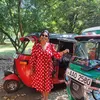India has 15,106 kilometers of land borders running through different kinds of terrain, including mountains, hills, plains, valleys, forest, desert and swamps, as well as a coastline of about 7,516 kilometers, Those long, vulnerable borders are shared with seven countries — China, Pakistan, Bhutan, Myanmar, Afghanistan, Nepal and Bangladesh. History, culture and religion have played a significant role in defining Indian borderlines, and over the years, certain cities by the borders have gained immense attention from the travelers.
Here's a list of the last Indian towns, before the border begins:
1. Chitkul, Himachal Pradesh
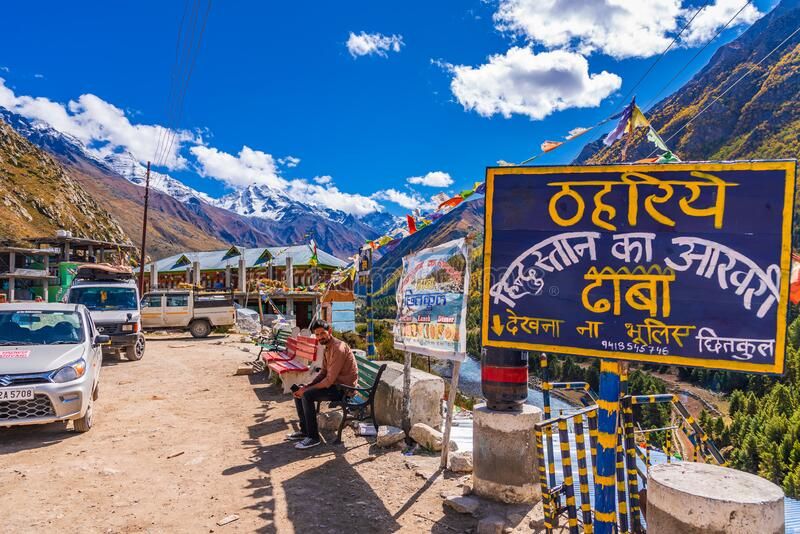
Tucked peacefully between the Indo-Tibet border, Chitkul is a place that'll leave you awestruck with its pristine beauty and gorgeous landscapes. Located on the banks of the Baspa River in Kinnaur, Himachal Pradesh, along the old Tibet trade route, Chitkul is characterized by apple orchards, tin-roofed houses and the gushing river on one side and snow-clad mountains on the other. Deemed to be the last inhabited village of the country, Chitkul has off-late become extremely popular among travelers who are on their way to Spiti Valley, driving up from Shimla. Stop for a cup of chai and maggi at the 'Hindustan Ka aakhri dhaba', while admiring the beauty of nature around you!
2. Mana, Uttarakhand
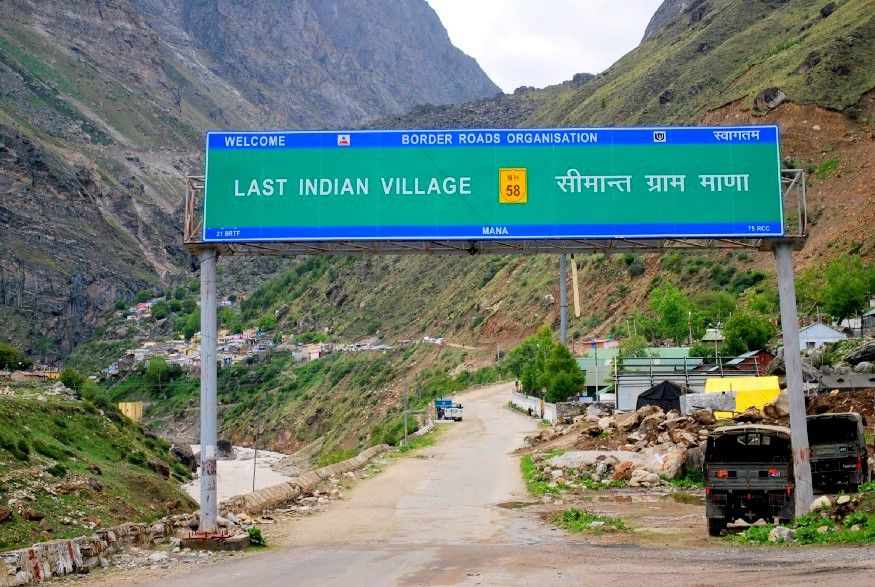
While Chitkul is basically the last inhabited village located on the Indo-Tibet border, Mana in Uttarakhand is officially recognized as the ‘Last Village of India’. Located in the district of Chamoli, at an elevation of 3200 meters, this beautiful Himalayan hamlet is 24 km from the Indo-China border, and just 3 km from the famous Hindu shrine of Badrinath. There are numerous folk tales attached to this place and it's believed that the Pandavas crossed the Mana village during their final journey to heaven. There’s also a stone bridge called Bheem Pul near River Saraswati that’s believed to have been built by Bheema. This village is so quaint that you'd really feel as if once upon a time Gods indeed lived next door in this mystical village, in the Dev Bhoomi of Uttarakhand.
3. Turtuk, Ladakh
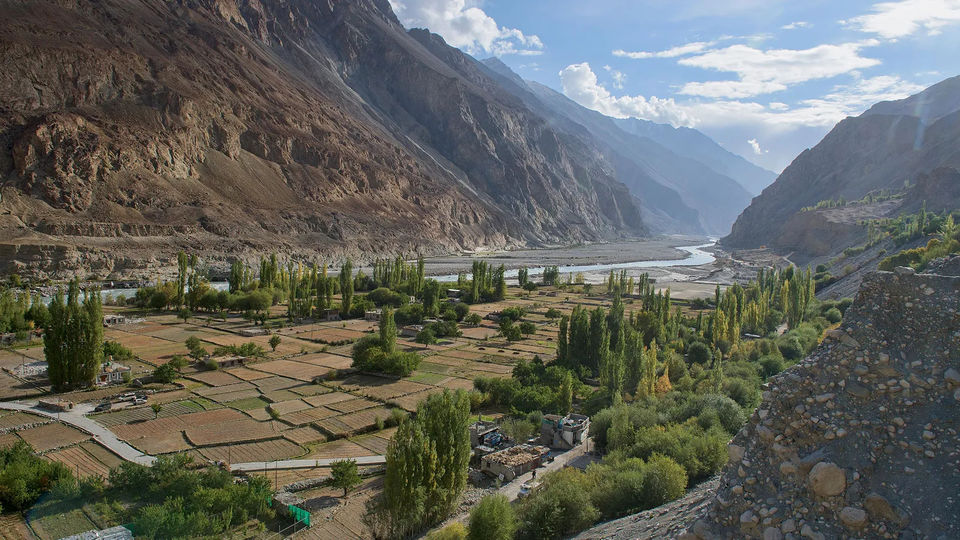
Lying peacefully along the Shyok river, on the Gilgit-Baltistan border, Turtuk is the last Indian outpost before Pakistan in Ladakh's Nubra Valley, overlooking the high peaks of the Karakoram mountain range. Opened to tourists in 2010, this hidden gem can only be accessed through treacherous roads crossing the highpasses from Leh. Hop along the Barley fields, gazing at the dramatic skies where the clouds kiss the peaks once in a while and share a smile with the locals. Turtuk is also the gateway to the Siachen Glacier, with the snow-clad peaks of Mt. K2 visible in the horizon from the village. Although it’s in Ladakh, the language, culture, religion and societal structure in Turtuk is immensely different from that of the rest of the Union Territory.
4. Jaigaon, West Bengal
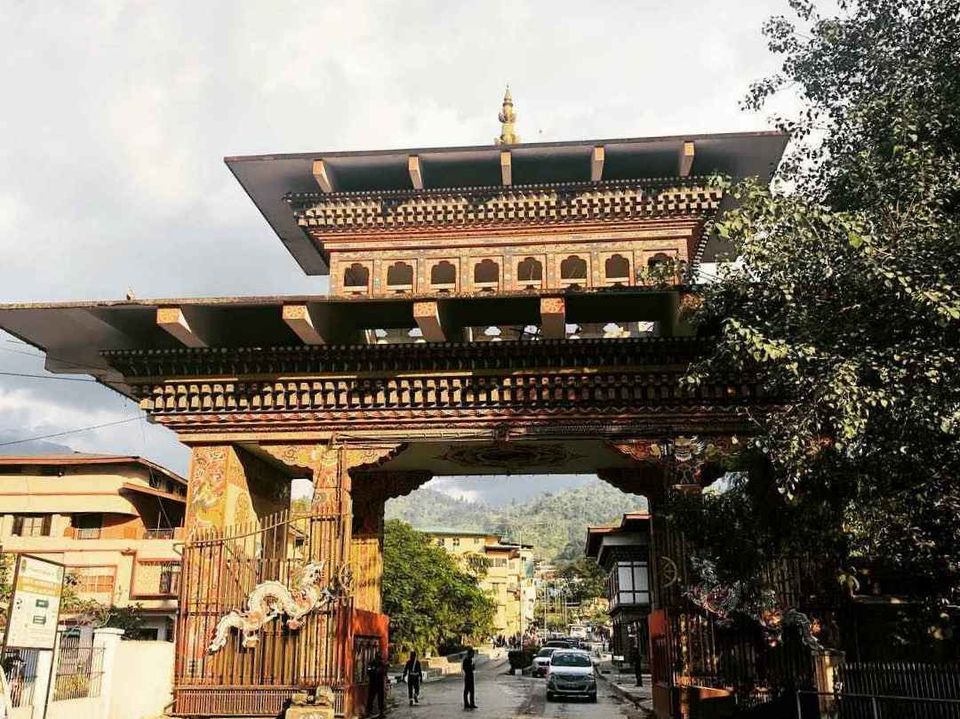
Separated by the Bhutan Gate, Jaigaon is located on the country's border with Bhutan, in the Alipurduar district of West Bengal, with Phuentsholing right across. A commercial town with the Bhutanese Embassy at a distance of 100 meters, Jaigaon has several hotels catering to the tourists traveling by roads to Bhutan. While the main town has a lot of hustle and bustle, the outskirts houses lush landscapes dotted by tea gardens.
5. Dawki, Meghalaya
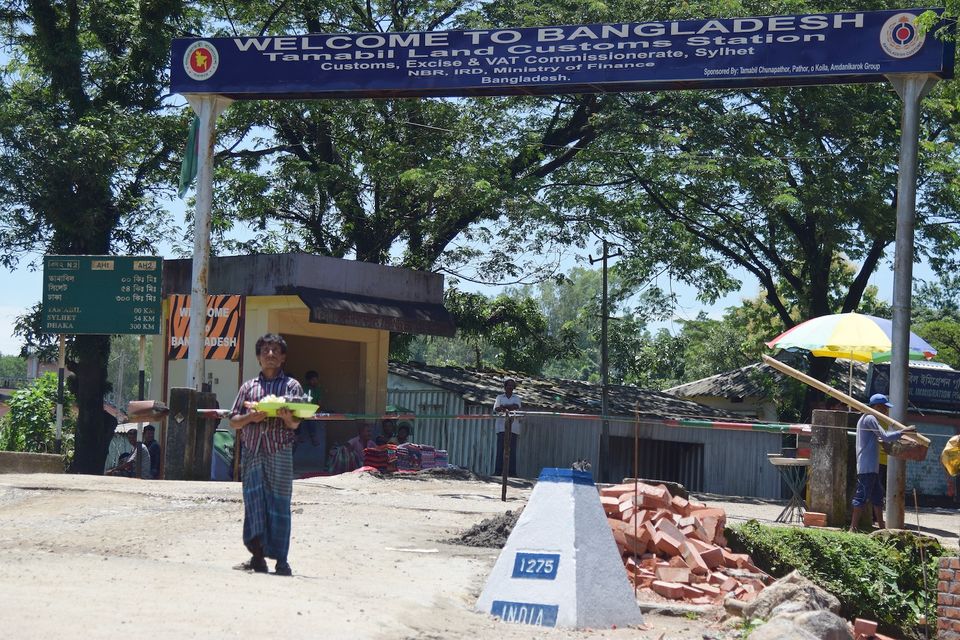
A postcard-perfect village in the Northeastern state of Meghalaya, Dawki is majorly known for its impeccable landscapes of the Jaintia Hills, and the pristine Umngot River, which is known to be 'the Cleanest River in Asia'. But what people often don't know is that if you wander outside this village, for even a few steps, maybe 200 meters, on the other side, the Bangladeshi officials will book you under the charge of 'trespassing'! Located on the Indo-Bangladesh border, you can walk to Tambil post in Bangladesh from Dawki in India, in just about 5 minutes. The capital city of Dhaka is about 300 KM from this border.
6. Moreh, Manipur
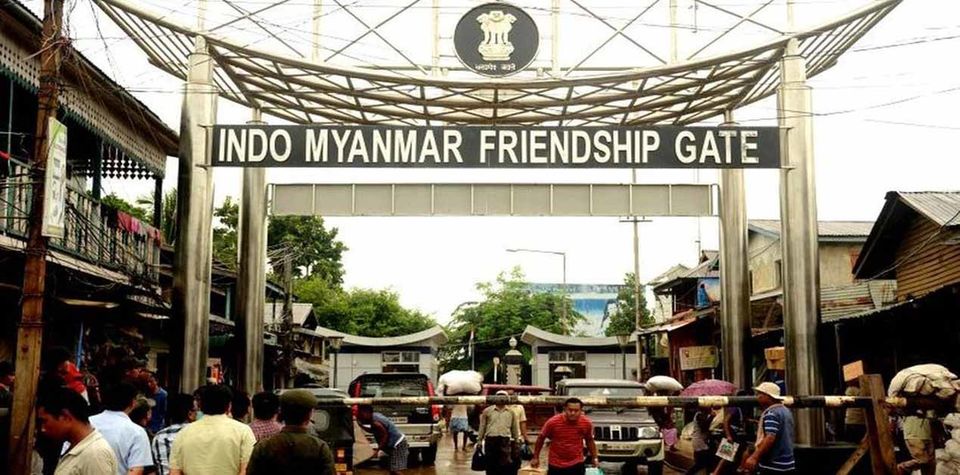
While Meghalaya shares borders with Bangladesh, Manipur shares it with Myanmar. Located on the Indo-Myanmar border, the busy commercial town of Moreh is a paradise for shopaholics - as you'd find everything from handicrafts to electronics at the markets in this city! Often touted as 'the Gateway to Southeast Asia', travelers take the roads through Morey, to reach the town of Tamu in Myanmar, which lies just 5 KM across the border. Other than its vibrant markets, Moreh is also known for the warmth of the people & the richness of their culture, as well as the exquisite natural beauty surrounding this town.
7. Wagah, Punjab
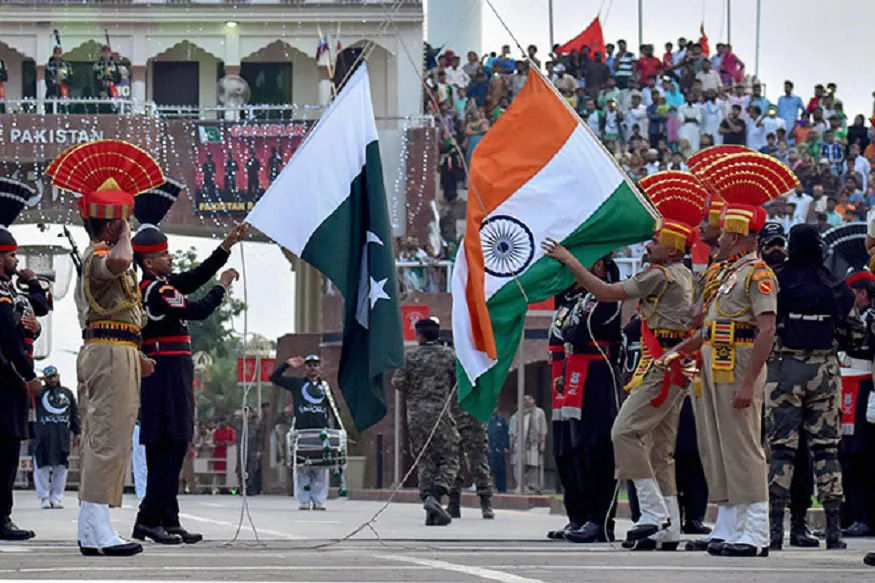
One of the most popular border towns in India, visited by hundreds of people daily is Wagah in Punjab. The Retreat Ceremony at the border happens every evening, attended by people from both the nations where Indian as well as Pakistani soldiers march in drill, going through the steps of bringing down their respective national flags. Located at a distance of about 29 KM from Amritsar and 27 KM from Lahore, Wagah is the most prominent border crossing point between India and Pakistan, and was used as one of the major transit points during 1947 after partition.
8. Dhanushkodi, Tamil Nadu
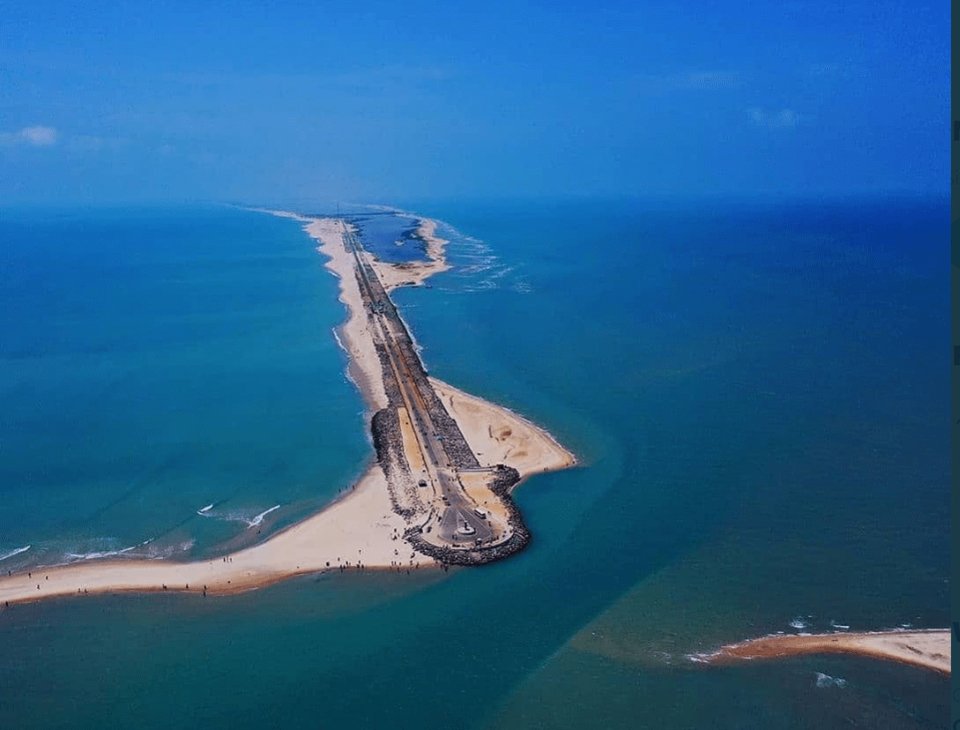
Deeply rooted in history and mythology, Dhanushkodi is an abandoned town at the south-eastern tip of Pamban Island of the state of Tamil Nadu in India. The last town before the Sri Lankan borders begin, flanked by the Bay of Bengal on one side and the Indian Ocean on the other, Dhanushkodi is a strip of land that is only a kilometer wide. The town was ghosted after it was deemed unfit for living after the devastating Rameswaram cyclone in 1964 and remains uninhabited in the aftermath. It lies a little over 20 KM from Sri Lanka’s Talaimannar, and it's only connection with mainland India is the Pamban Bridge.
9. Sunauli, Uttar Pradesh
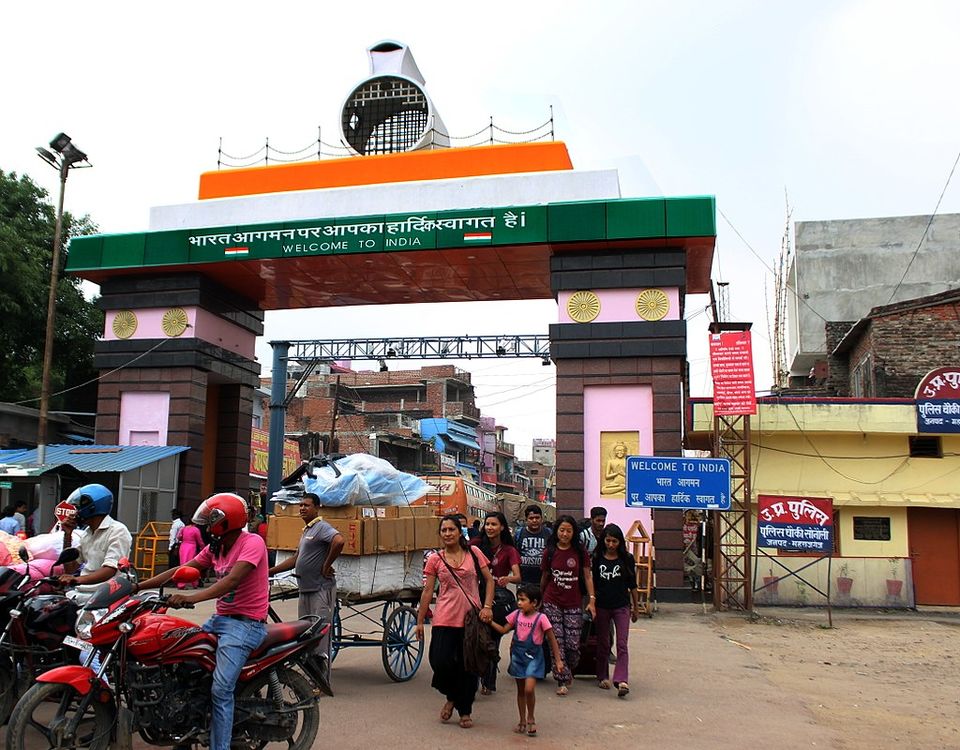
Located in Maharajganj district in Uttar Pradesh, Sunauli is a well-known and most famous transit point between India and Nepal. The closest Indian city is Gorakhpur, which is about 90 KM from Sunauli and the nearest city in Nepal is Bhairahawa, which is about 4 KM from the border. Though Sonauli itself is not known for any specific tourism destination, it is very close to the well known Buddhist tourist spot, Lumbini, which is the birthplace of Lord Gautam Buddha. The town has now become a popular trade-point between the two countries and traveling by road has become simpler as one can also get a Nepal Visa from here, while crossing the border.
There's a famous saying: "India is too vast to be covered in a lifetime". And as we continue our friendly relations with our neighbors, we hope that these cities by the borders can thrive in peace.
Have you been to any of these border towns or added any to your bucketlist? Let us know in the comments below.
Explore 'Mera Shandar Bharat, Safar Anokhey India Ka' where we are showing you a never-before-seen India!
Ready to travel for free? Earn credits and redeem them on Tripoto’s weekend getaways, hotel stays and vacation packages after the pandemic is over!
Share your stories on Tripoto’s Clubhouse channel!

